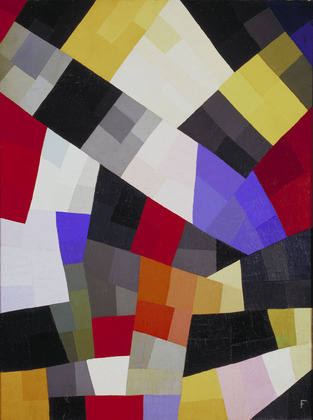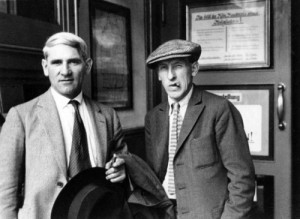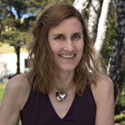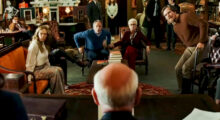There’s a prevailing sense of warmth in Jewish artist Otto Freundlich’s The Unity of Life and Death (1936-38). Curved, colorful squares build on one another in the abstract oil painting, inspiring a sensation I can only compare to seeing holiday lights without (much-needed) glasses, or a cityscape at night: yellows, purples and reds perforate an authoritative blackness. In other words, Freundlich indulges us in a romantic vision – but one that finds its base in reality.
“Curved, colorful squares build on one another in the abstract oil painting, inspiring a sensation I can only compare to seeing holiday lights without (much-needed) glasses, or a cityscape at night: yellows, purples and reds perforate an authoritative blackness.”
It’s easy enough to discern where traces of “Life” and “Death” exist in Freundlich’s painting: the more optimistic, colorful shades embody a sense of vitality, while the black cubes represent the end of life. As made evident by the title, however, we’re not meant to see life and death in opposition. We’re meant to see them in “Unity” and conversation. There’s a sense of brightness, of contentedness with the fact that the two are inextricably bound — why try to pit brothers against one another? It’s a positive stance, and one that becomes even more remarkable when we learn about the trying life of the painter, who died in a concentration camp in WWII.
“…we’re not meant to see life and death in opposition. We’re meant to them in “Unity” and conversation.”
Originally from northern Poland, Otto Freundlich made a hasty move away from his life in the wood industry to the booming art scene of Paris. He moved to Paris’ Montmartre quarter in 1908, at the age of 30, where he soon became a staple in the coterie of abstract and Dada darlings. In 1919, he even helped rally the first Dada exhibition in Cologne.
But as the Nazis’ hold on France fastened, it became clear than the country was no longer safe for a Jewish man like Freundlich – especially one with an artistic taste so “abominable” to the Nazis. Freundlich’s sculpture Der Neue Mensch (The New Man) was even confiscated and mockingly displayed in the Nazi exhibition of abstract art entitled Entartete Kunst, or “Degenerate Art”.
“But as the Nazis’ hold on France fastened, it became clear than the country was no longer safe for a Jewish man like Freundlich”
Otto Freundlich was only 65 when he was killed. Though friends and fellow artists (Picasso included) tried to save him from the unjust death that befell so many of the Jewish people in WWII, Freundlich was eventually transported to Majdanek Concentration Camp in 1943. Immediately upon his arrival in Poland, the artist was assassinated.
This is what makes The Unity of Life and Death so special: when considered outside of its history, the abstract painting is simply a feat of innovation in art. But when we consider the Künstler behind that art, it becomes a triumph of the human spirit.
Related SevenPonds Articles:
- Learn about traditional Jewish burial rituals
- A Woman’s War: The WWII Photographer of Lee Miller
- Jewish artist Marc Chagall’s painting, “The Death”

 “The Unity of Life and Death” by Otto Freundlich
“The Unity of Life and Death” by Otto Freundlich





 “Other Side” Documentary Directed by Carter Oakley and Heather Hogan
“Other Side” Documentary Directed by Carter Oakley and Heather Hogan
 The Other Death in the Family
The Other Death in the Family















